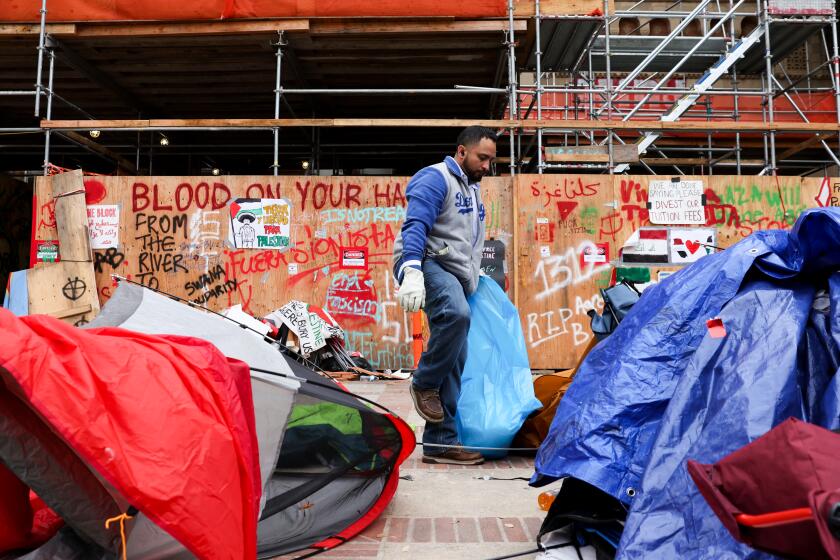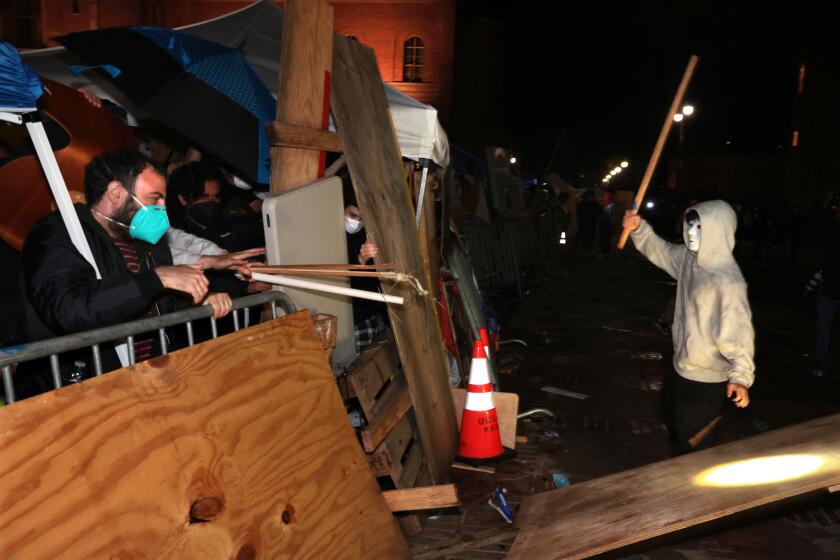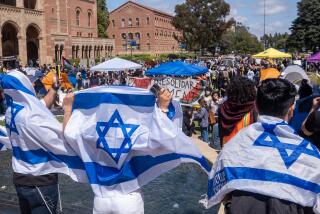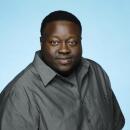Police report no serious injuries. But scenes from inside UCLA camp, protesters tell a different story
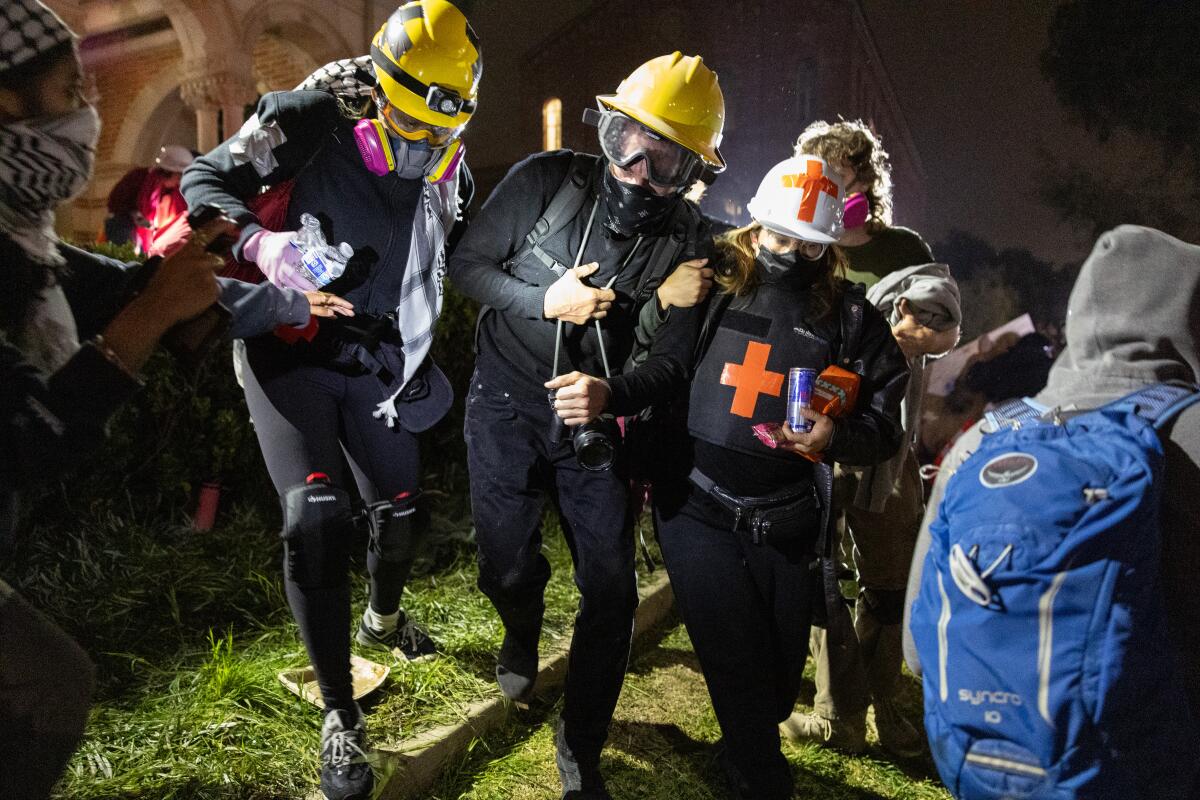
- Share via
It was a request that police had made repeatedly: Stop throwing things at officers. But as pro-Palestinian demonstrators made their last stand Thursday morning in defense of the encampment they’d occupied at UCLA for the better part of a week, some protesters did not comply.
After another piece of wood or a plastic water bottle was flung toward law enforcement, demonstrators would yell for the others to stop hurling projectiles. Still, they kept flying.
The police, who were decked out in full riot gear, eventually had enough. One officer raised the barrel of his gun in the direction of a front-line demonstrator and shot him square in the chest with a “less-lethal” round that made a deep thud as it connected.
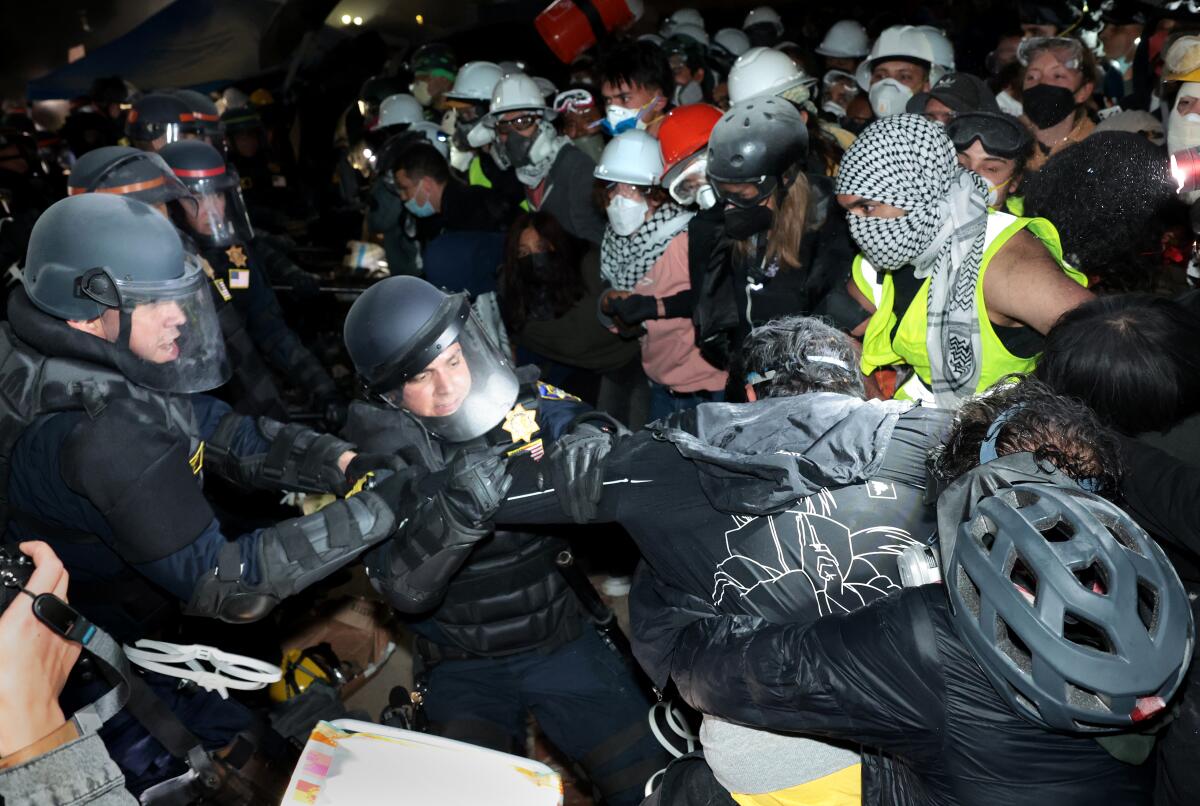
The protester fell to the ground, where he remained in a ball for about a minute while others called for a medic. A couple of people with red crosses emblazoned on their protective gear made their way through the mass of bodies and picked up the demonstrator. They quickly hauled him off to the medical tent at the center of the encampment, where a few other protesters were being treated for injuries.
In a Thursday statement, the UCLA Palestine Solidarity Encampment decried law enforcement’s actions: “They tore students from our human chain and shot rubber bullets at close range. … Many were rushed to the ER after the bullets connected with heads and hands.” The UCLA branch of Students for Justice in Palestine posted on X on Thursday morning that there were “at least five people shot in the head with rubber bullets.”
With the help of bulldozers, items including tents, chairs and yoga mats were removed Thursday morning from the UCLA encampment occupied by pro-Palestinian protesters and shoved into a large gray dumpster.
Amr Shabaik, legal and policy director for the Council on American-Islamic Relations’ greater Los Angeles area office, said the organization is reviewing “multiple incident reports” of people who were hurt Thursday at UCLA.
Shabaik provided a statement from “volunteer medics on the ground” who said they “treated numerous individuals for both minor and serious injuries inflicted by law enforcement.”
“These ranged from scrapes and bruises to more severe cases — including burns from flashbang fragments, acute respiratory failure from smoke, as well as lacerations and head traumas with suspicion for concussion or intracranial hemorrhage (brain bleed) from rubber bullets. One head trauma was confirmed to have indeed resulted in subarachnoid hemorrhage,” the medics’ statement said, adding that “their conditions [were] worsened by an intentional delay of emergency medical services.”
Los Angeles Police Capt. Kelly Muniz said LAPD officers did not fire rubber bullets or other less-lethal rounds during the clearing of the encampment. A media representative for the California Highway Patrol — whose officers were seen firing less-lethal rounds Thursday — said the department did not have information about injuries.
Although law enforcement describes weapons such as the ones the CHP’s officers fired as less lethal, the agency’s manual classifies them as likely to result in significant injury.

Ed Obayashi, a Northern California use-of-force expert, said such projectile weapons are known for their lack of accuracy over distance. “It is not unexpected,” he said, “that someone could be seriously injured by a less-lethal weapon.”
Times reporters and photojournalists witnessed several instances of protesters being injured during the Thursday morning clearing of the UCLA encampment, yet LAPD interim Chief Dominic Choi, less than 12 hours later, expressed relief.
“I am thankful there were no serious injuries to officers or protesters,” Choi wrote on X.
Asked how Choi was able to make that determination so quickly, and whether the LAPD had any more information about injuries — serious or not — the department directed all inquiries to UCLA. A voicemail left for a spokesperson for the UCLA Police Department on Thursday afternoon was not immediately returned.
Brian Humphrey, a spokesman for the Los Angeles Fire Department, said the department had personnel at UCLA on Thursday morning available to help anyone who required medical attention. He echoed Choi’s statement.
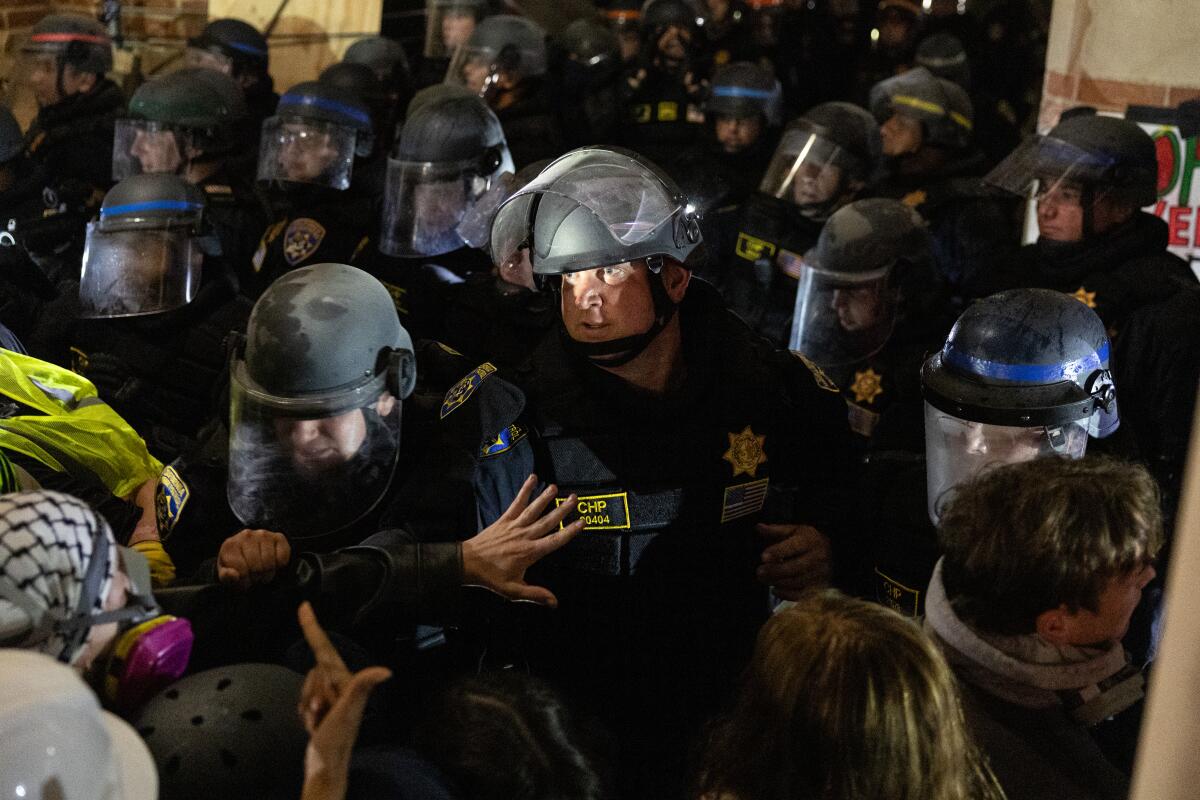
“We did not encounter any serious injuries,” he said in a phone interview. “There was no loss of life and no life-threatening illnesses or life-threatening injuries.”
Humphrey said the LAFD “encountered a total of five patients with minor injuries,” two of whom were transported to a hospital for treatment. He said he did not have any information about who the five injured people were, including whether they were protesters, law enforcement officers or bystanders.
The Los Angeles County Sheriff’s Department — which also had uniformed personnel at UCLA on Thursday — said in a statement that “there were no reported significant injuries to our personnel, or the individuals that were booked.”
But the scenes inside the encampment and its medical tent tell a different story — one in which not everyone escaped unscathed.
A collective research effort has cropped up to name and shame the pro-Israel demonstrators who carried out violence at UCLA. Distrusting police to deliver justice, people are taking it upon themselves.
The tent was a hive of activity for much of the morning as people tripped over debris, were hit with projectiles and were crushed amid the mayhem.
Just after 3:30 a.m. Thursday, calls came from the front line: “Medic! Medic!” Two men wearing blue plastic ponchos with crosses made of red tape were rushing a woman whose head was wrapped in a kaffiyeh to the medical tent. The woman appeared to be in a daze, and she slumped down into a chair under the bright lights strung up in the makeshift clinic. One man had a deep gash on his leg that was pouring blood until medics patched him up. It’s unclear how badly either person was hurt or if they were taken to a hospital.

One man shot with a less-lethal round on Thursday needed surgery on his finger, which was so badly hurt that doctors considered amputation, according to a person who was with him on the front line.
Another man posted pictures of himself on social media at 8:45 a.m. Thursday with a bloody head bandage and blood-stained T-shirt and kaffiyeh.
He wrote that he had been shot with a less-lethal round and that he was “leaving the hospital now with 11 staples and 4 stitches,” adding that “despite all this im so proud of everyone that was there tonight.” His accounts on X and Instagram appeared to have been deleted as of Thursday evening.
Times staff writer Melissa Gomez contributed to this report.
More to Read
Sign up for Essential California
The most important California stories and recommendations in your inbox every morning.
You may occasionally receive promotional content from the Los Angeles Times.
